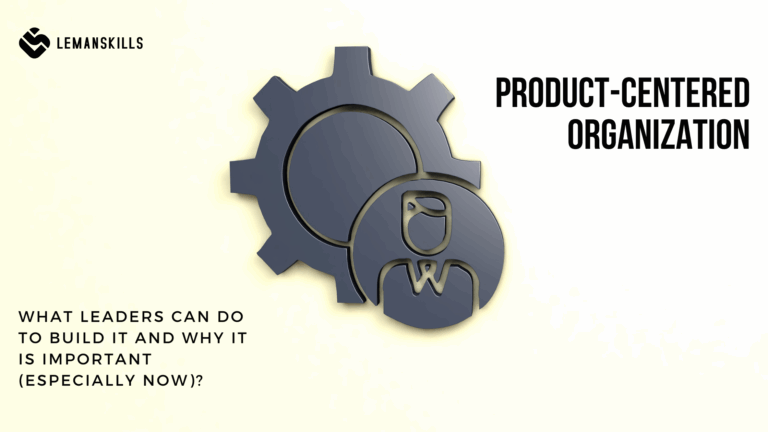Most of us want to spend those 24h we all have in the best possible way. We try to be good at time management, more efficient, cut the “time wasters” or use Pomodoro technique. And with all that we are still surprised that we are not as good with time as we want, we don’t achieve as much as we want, personally or professionally.
It’s happening mostly because we have many convictions and false believes in our heads about the right approach to the time itself. We’ve read or heard something without deeper reflection on the idea, we put it in the brain and sticked to it. Now is the time to challenge 5 of the most crucial statements that we have in our heads and that are stopping us from being successful.
1. Being always busy is a sign of your high value
Being busy makes us feel important, needed. We often have this impression that if our calendars are fully packed, we are more valuable. And when we see free slots, we feel guilty, sometimes scared of “not doing anything”. It is a symptom of modern times that assesses the usefulness and importance of an employee by level of their calendar’s “busyness”.
And that’s crazy, since we know how many of those meetings are pointless and could’ve been an e-mail or a Teams message. And on the flip side, we know how much we can do when we are undistracted, focused, when we have time and space for taking a step back and actually THINK about what we want to achieve and how.
So I would like to encourage you to reflect on what you are thinking about being busy all the time – advantage or disadvantage? Be honest with yourself, nobody is going to judge you. Then think to which meeting you can say “no” to, to gain some of your time back to build a real value?
2. People always understand “I don’t have time” answer
Speaking of saying “no” to things. This subject was discussed in a more detailed way in this article, but this excuse is being treated as a universal sentence on every situation when we don’t want or don’t know how to deal with something. When a manager has a conflict in a team, she/he often says: “I don’t have time for that right now, we have more urgent business cases to cover”. When a person doesn’t feel very good, has headaches or feels tired all the time, he/she just takes a pill or have another cup of coffee. “I don’t have time for that right now, I need to take care of work/home/kids/parents”. You name it.
“I don’t have time” is a false friend. As mentioned many times on this blog, we are not victims or slaves of the time, we are its owners. And as owners, it’s our decision what to do with the time we have – every single minute that we spend on this planet is in our scope of control. It’s our choice what we do with it and with whom. Put some effort in and find the time you’ve lost when you started using “I don’t have time” excuse. What can you do differently to stop saying that?
3. Scheduling the hardest tasks first is always a good time strategy
How you schedule your day should be connected with your internal level of energy, named the circadian rhythm. Each person on the planet at 9:00AM has different body temperature, heart rate, metabolism or blood pressure. The time of the day will affect behavior and intellectual performance differently regarding each of us. Till Roenneberg created a set of chronotypes that describe our energy cycle throughout the day, taking into consideration how we differ and what can we do about it to live a better live.
We do know that it’s not possible to wake up whenever we fell like it, work when we feel the most effective and go to bed when we feel asleep (including naps during the day). We have 9-5 jobs, we need to get up at a certain time to work, take care of other things in the morning, afterwork etc.
So for those of us who are Wolfes (going to bed around 12AM, waking up around 7:30-9AM) the deep or creative work will be the most efficient around 12-2PM. On the other hand, for those of us who are Lions (going to bed around 10PM, waking up around 6-7AM) the highest efficiency will be around 8AM-12PM. You can read more about where you land on the scale in this article.
Regarding that, the idea of working on the biggest task first thing in the morning is not applicable or healthy for everyone. For some of us it’ll work, for some of us it’ll be the worse thing you can do. Check which type you are and decide what can you do differently to live more in harmony with your natural cycle. Maybe it’s just one little thing, like scheduling time for deep work in the different time during the day?
4. Multitasking is a good way of getting done more faster
Several years back, multitasking was a skill listed in the job advertisements as a requirement of a good candidate. Doing more than one thing at the same time appeared as a “competence of the future” and was a real thing that employers was looking for regarding increasing number of tasks in the workplace.
Nowadays we should be smarter about it, since we have more research that tells us that there is no such thing as multitasking. It’s impossible to do two things at the same time, we can only switch between the tasks, sometimes really quickly. But each time we get distracted, we lose focus, and we need more and more time to get back to where we were a minute ago. So in a consequence of that, we think we save some time and do things faster, but really we waste time getting back to the focus mode.
Choose one thing, turn off notifications, focus only on that thing. When you are done, start doing the next one. It’s the key to being truly effective, instead of living in an illusion of it.
5. Perfectly planned day is a key to be effective
What is perfection anyway? It can mean something completely different for each of us, there is no one definition applicable to everyone. But let’s say that a perfectly planned day is the day with a list of tasks to do at work, planned calendar and scheduled time before/after work. Everything looks so good that we can be internally motivated to this day only by looking on the plan.
But we also know that life happens. Extra super-important-task that needs to be done RIGHT NOW, sudden colds, phone that wasn’t ringing and it’s ringing like crazy just today. In that scenario we feel like failing, guilty, weak that we weren’t able to stick to the plan.
Treat plan as a tool. Not the only factor of your success, just one of the options to structure your day, week or month. Keep it adaptive, flexible since the circumstances change all the time, and it’s not going to end anytime soon. Don’t be a prisoner of your plan, it should serve you, not the other way around. But keep your boundaries straight – flexibility doesn’t mean that anything or anyone should ruin your plan just because they have a need that is extremely urgent for them at the moment.
The bottom line
We are owners of our time. It’s the first thing we should acknowledge, before we start learning how to deal better with all of those things we need to cover every day. This is crucial, without that even the most beautiful plans, tools and strategies won’t be useful, and our frustration will be higher and higher. See which of those myths you believe in and what you can do to get rid of them. You’ll see how your live improves after few small changes in your way of thinking.




